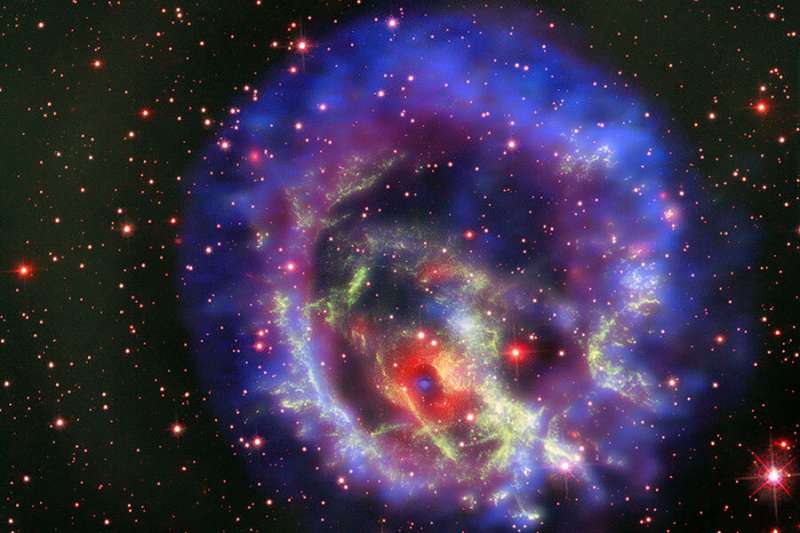Physicists predict neutron stars may be bigger than previously imagined

When a massive star dies, first there is a supernova explosion. Then, what's left over becomes either a black hole or a neutron star.
That neutron star is the densest celestial body that astronomers can observe, with a mass about 1.4 times the size of the sun. However, there is still little known about these impressive objects. Now, a Florida State University researcher has published a piece in Physical Review Letters arguing that new measurements related to the neutron skin of a lead nucleus may require scientists to rethink theories regarding the overall size of neutron stars.
In short, neutron stars may be larger than scientists previously predicted.
"The dimension of that skin, how it extends further, is something that correlates with the size of the neutron star," said Jorge Piekarewicz, a Robert O. Lawton Professor of Physics.
Piekarewicz and his colleagues have calculated that a new measurement of the thickness of the neutron skin of lead implies a radius between 13.25 and 14.25 kilometers for an average neutron star. Based on earlier experiments on the neutron skin, other theories put the average size of neutron stars at about 10 to 12 kilometers.
Piekarewicz's work complements a study, also published in Physical Review Letters, by physicists with the Lead Radius Experiment (PREX) at the Thomas Jefferson National Accelerator Facility. The PREX team conducted experiments that allowed them to measure the thickness of the neutron skin of a lead nucleus at 0.28 femtometers—or 0.28 trillionths of a millimeter.
An atomic nucleus consists of neutrons and protons. If neutrons outnumber the protons in the nucleus, the extra neutrons form a layer around the center of the nucleus. That layer of pure neutrons is called the skin.
It's the thickness of that skin that has captivated both experimental and theoretical physicists because it may shed light on the overall size and structure of a neutron star. And though the experiment was done on lead, the physics is applicable to neutron stars—objects that are a quintillion (or trillion-million) times larger than the atomic nucleus.
Piekarewicz used the results reported by the PREX team to calculate the new overall measurements of neutron stars.
"There is no experiment that we can carry out in the laboratory that can probe the structure of the neutron star," Piekarewicz said. "A neutron star is such an exotic object that we have not been able to recreate it in the lab. So, anything that can be done in the lab to constrain or inform us about the properties of a neutron star is very helpful."
The new results from the PREX team were larger than previous experiments, which of course affects the overall theory and calculations related to neutron stars. Piekarewicz said there is still more work to be done on the subject and new advances in technology are constantly adding to scientists' understanding of space.
"It's pushing the frontiers of knowledge," he said. "We all want to know where we've come from, what the universe is made of and what's the ultimate fate of the universe."
More information: Brendan T. Reed et al. Implications of PREX-2 on the Equation of State of Neutron-Rich Matter, Physical Review Letters (2021). DOI: 10.1103/PhysRevLett.126.172503
D. Adhikari et al. Accurate Determination of the Neutron Skin Thickness of Pb208 through Parity-Violation in Electron Scattering, Physical Review Letters (2021). DOI: 10.1103/PhysRevLett.126.172502
Journal information: Physical Review Letters
Provided by Florida State University




















